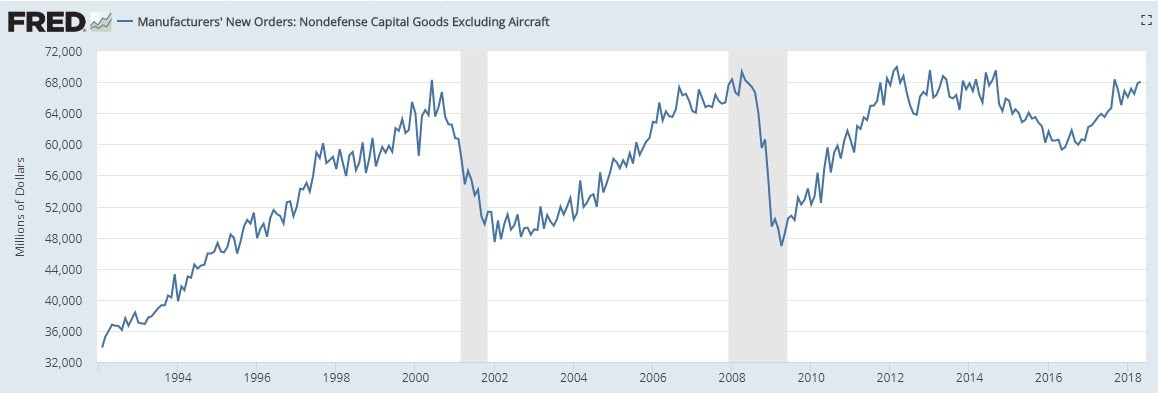|
July 6, 5:00 pm EST The jobs report this morning continued to show an improving economy, operating with the luxury of low inflation. I say improving because as the unemployment rate ticked higher, it represents people coming back into the work force. Those people that have been discouraged along the way, through the economic crisis and recovery, and have dropped out of the work force, are coming back, looking for work. Remember, the missing piece of the recovery puzzle over the past decade has been wage growth. That has been the telltale sign of the job market, despite the low headline number. With little leverage in the job market to maximize potential, much less command higher wages, consumers tend not to chase prices in goods and services higher–and they tend not to take much risk. This tells you something about robustness of the economy. And that’s precisely why we’ve needed fiscal stimulus and structural reform. And it’s just in the early stages of feeding through the economy. The other big news of the day was trade. The U.S. started implementing duties on $34 billion of Chinese imports today. On that note, the media has been focused on one specific sentence in the Fed’s minutes yesterday. After weeding through the long conversation on how well the economy was doing, they picked out this sentence to build stories around “contacts in some Districts indicated that plans for capital spending had been scaled back or postponed as a result of uncertainty over trade policy.” Plucking this one out and using it to support their scenarios of trade wars and economic implosion has to be good for reeling in readers. But keep in mind capital goods orders (the chart below) are nearing record highs again. |
 |
|
Add to this: An ISM survey back in December showed that businesses were forecasting just 2.7% growth in capital spending for 2018. But when they were asked again in May, they had revised that number UP to 10.1% growth.
If you haven’t joined the Billionaire’s Portfolio, where you can look over my shoulder and follow my hand selected 20-stock portfolio of the best billionaire owned and influenced stocks, you can join me here.
|







